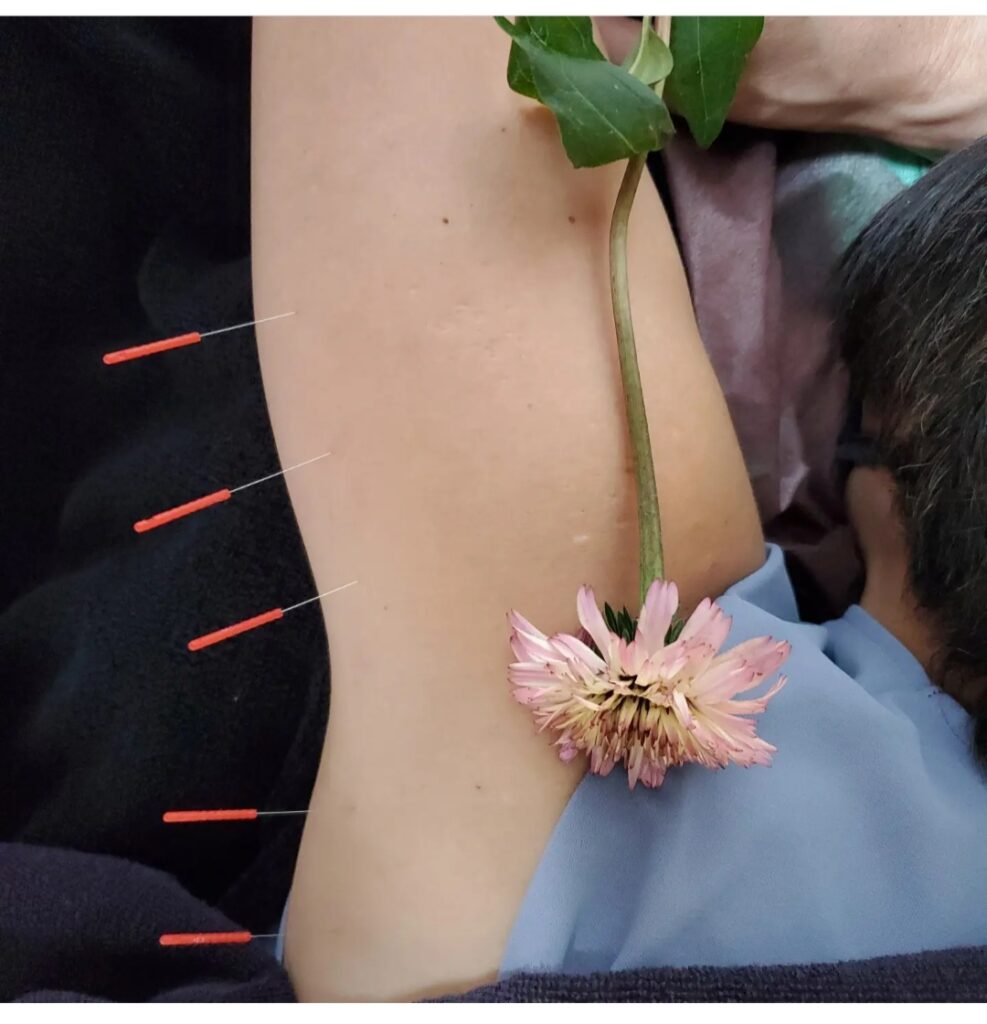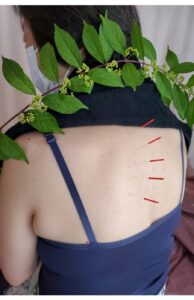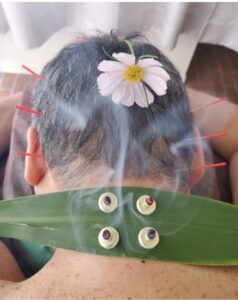腕が痛い 腕が上がらない
Arm pain, cannot raise arm.
五十肩だと思って放置したら、次第に腕の方まで痛みがおりてきて来院。五十肩というのは、50歳前後に多くみられる、肩に痛みが出てきて動かなくなる症状です。症状が急激に現れる時期は、肩やその周辺が痛くて夜も眠れないような、夜間痛がでる方もいます。痛みが弱まっても、関節部分にある、関節包という関節を包んでいる袋のような部分全体が固まってしまうので、肩を動かす、肩や腕を上げる動作の可動域が減少したりします。肩からくる病気のなかで多いのが腱板断裂です。また、石灰沈着性腱板炎もあります。石灰が腱板に沈着することによって、ある朝起きたら突然しびれたように痛くてまったく動かせなくなります。これも50歳前後が多いので五十肩と間違えやすいです。関節リウマチや、変形性肩関節症なども考えられます。肩以外からくる肩が痛くなる症状では、首の神経からくる痛みがあります。7つある頸椎のうち5番目の神経が圧迫されると肩が麻痺したように痛くなります。首を動かしてみて、首の動きで症状が憎悪する場合は首だと判別できます。また手根管症候群など手首の神経の病気でも肩は痛くなります。また、狭心症など心臓に疾患があると、左肩に痛みが出ます。肩の腱板とは肩甲骨から筋肉、棘上筋、、棘下筋、小円筋、肩甲下筋という4つの筋肉が合わさって上腕骨につく腱のことをいいます。腱とは筋肉が骨に付着している部分のことです。さらに、腱板のまわりには骨と骨をつなぐ強靭なヒモ状の靭帯があり、関節が安定した動きをするように支えています。この靭帯は、加齢とともにコラーゲンが少なくなり、水分が抜けて厚く硬くなります。肌のコラーゲンと水分が少なくなって乾燥すると、皮膚がめくれてガサガサするのと同じようなものです。この靭帯の厚く硬くなった部分によって腱がこすれ、だんだんとほころび、やがて切れる。これが腱板断裂です。
40代からにみられる症状で、原因の多くは老化です。腱は4本あるので、1本2本と切れていても痛みがなく日常生活に困らない人も多いです。しかし、夜眠れないほどに痛いというように日常生活に支障が出る場合や、若くても野球やテニスをする人で、スポーツ時に痛みを感じるてしまう人もいます。この場合は、整形外科の受診をおすすめします。治療には保存的治療と手術的治療があります。保存的治療では、患部を温める温熱療法、鎮痛抗炎症剤与(薬)、経皮吸収型の痛み止めの(湿布)、ヒアルロン酸やステロイド製剤の関節注射などを行います。鍼灸治療としては、血行を促進して、患部の発痛物質を流し、疼痛緩和をはかります。疼痛が軽減してきたら、運動療法を行い、肩が固まらないように(フローズンショルダー)注意が必要です
He thought it was a frozen shoulder and left it alone, but the pain gradually moved down to his arm and he came to our hospital. A frozen shoulder is a condition that is often seen around the age of 50, in which the shoulder becomes painful and immobile. When the symptoms appear suddenly, some patients have nighttime pain in the shoulder and the surrounding area that prevents them from sleeping at night. Even if the pain lessens, the entire joint capsule, a pouch-like structure that surrounds the joint, hardens, and the range of motion for moving the shoulder or lifting the shoulder or arm is reduced. A rotator cuff tear is one of the most common shoulder-related diseases. There is also calcific rotator cuff tendinitis. Lime deposits on the rotator cuff cause the patient to wake up one morning and suddenly feel numb, painful, and unable to move at all. This is also common around the age of 50 and can easily be mistaken for frozen shoulder. Rheumatoid arthritis and osteoarthritis of the shoulder are also possible. Another symptom of shoulder pain that comes from a source other than the shoulder is pain from a nerve in the neck; if the fifth of the seven cervical vertebrae is compressed, the shoulder becomes numb and painful. You can identify it as a neck condition if the symptoms are aggravated by neck movement. Shoulder pain can also be caused by nerve problems in the wrist, such as carpal tunnel syndrome. Heart problems such as angina pectoris can also cause pain in the left shoulder. The rotator cuff of the shoulder is a tendon attached to the humerus by a combination of four muscles from the scapula: supraspinatus, infraspinatus, teres minor, and subscapularis. The tendon is the part of the muscle that attaches to the bone. In addition, the rotator cuff is surrounded by a tough string-like ligament that connects bone to bone and supports the joint for stable movement. As these ligaments age, they become thicker and stiffer due to the loss of collagen and moisture. This is similar to how the skin becomes rough and cracked when it dries out due to a decrease in collagen and moisture. The thickened and stiffened portion of the ligament causes the tendon to rub against the ligament, gradually fraying and eventually snapping. This is a rotator cuff tear.
This condition is seen in people in their 40s or older, and is mostly caused by aging. Since there are four tendons, many people have no pain and have no trouble in their daily lives even if one or two tendons are torn. However, there are cases where it interferes with daily life, such as when it hurts so much that one cannot sleep at night, or when it causes pain during sports for people who play baseball or tennis, even at a young age. In this case, a visit to an orthopedic surgeon is recommended. There are two types of treatment: conservative and surgical. Conservative treatment includes heat therapy to warm the affected area, analgesic anti-inflammatory drugs, transdermal pain relievers (poultices), and joint injections of hyaluronic acid or steroid preparations. Acupuncture and moxibustion therapy is used to stimulate blood circulation, flush out pain-producing substances in the affected area, and relieve pain. Once the pain is relieved, exercise therapy should be performed and care should be taken to avoid stiffening the shoulder (frozen shoulder).



